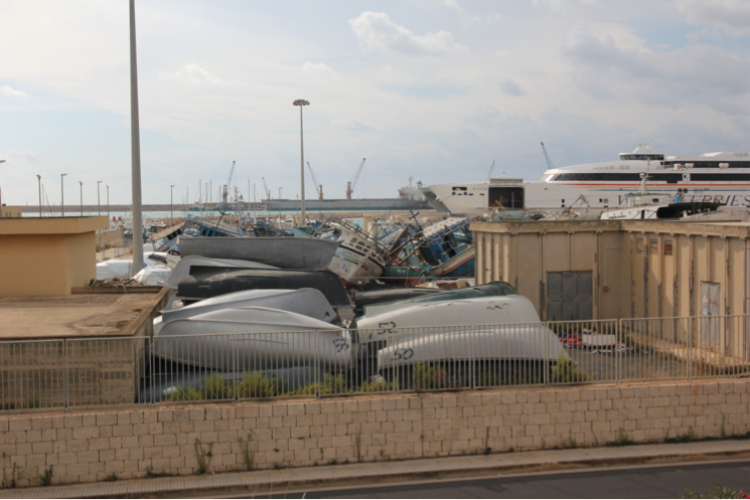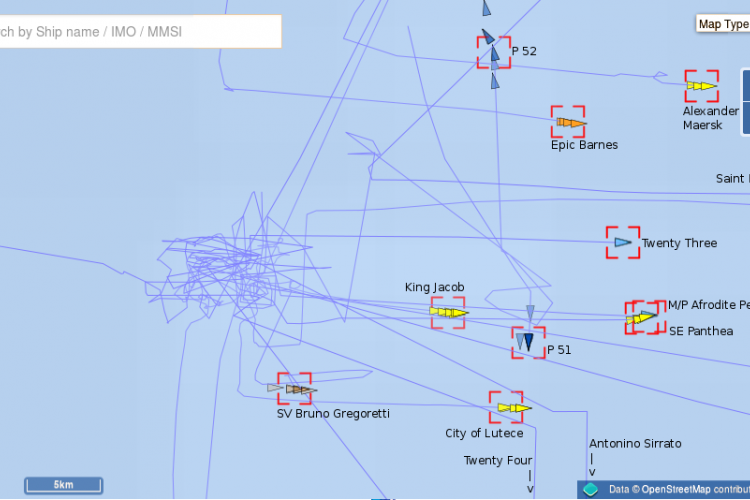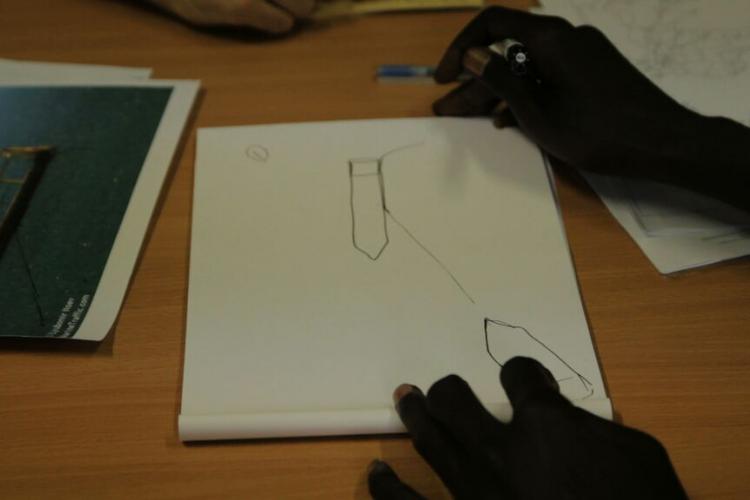'Sharing the Burden of Rescue': Illegalised Boat Migration, the Shipping Industry and the Costs of Rescue in the Central Mediterranean
Posted:
Time to read:
Guest post by Lorenzo Pezzani and Charles Heller, research fellows at the Centre for Research Architecture, Goldsmiths, University of London and post-doctoral researchers in the frame of the ESRC-funded ‘Precarious Trajectories’ project. This post is the fourth installment of the Border Criminologies Themed Blog Series on the Industry of Illegality organised by Ruben Andersson.

Until a few years ago, it appeared as if the different categories of people and goods crossing the Mediterranean sea did so on entirely distinct liquid planes. Travelling on one layer were illegalized migrants of the global south who, because of the EU’s policies of exclusion, have been forced to embark on the only means of transport at their disposal: overcrowded and unseaworthy boats. On this layer trajectories were slow, vessels didn’t move in a straight line and might stop abruptly, their passengers swallowed by maritime currents. On a second layer were the ferries carrying wealthy passengers, as well as the cargo ships and tankers that carry 90 per cent of global trade between the world’s networked factories and scattered consumers. Vessels on this layer travelled fast along predictable sea-lanes―or at least as fast as the well-oiled art of logistics could achieve. On the very limit separating these distinct layers of sea, border patrols and the militaries were charged with policing the sea and of sorting ‘unwanted’ movement from the steady flow of goods. On rare occasions, these layers would meet: mostly through sight, often in the form of a distant apparition. Recently, however, it’s as if these two layers of the sea have started to violently rub against each other, as the slow movement of the undesirables of the earth has been increasingly meeting the smooth flow of the shipping industry. In the process, the shipping industry, which in principle would have little relation with the management of migration at sea, has unwillingly become a central actor in this endeavour, transforming in the process the governmentality of the maritime border regime.
This hasn’t been a sudden phenomenon. In previous years, there have been several instances in which cargo ships have been diverted from their course to carry out rescues near the Libyan coast. These, however, remained largely isolated events until 2014, when the involvement of the shipping industry reached unprecedented proportions. According to the European Community Shipowners’ Association (ECSA), commercial vessels rescued 42,061 people in 2014, which is 25.2 per cent of the total number of arrivals across the Central Mediterranean. In the first five months of 2015, the incidence of commercial ships’ mobilisation grew even more important: the 14,769 people they rescued represent in fact 29 per cent of the total. The reasons for this sudden surge aren’t yet entirely clear, but certainly include the limited number of state-sponsored rescue means―especially after the end of the Italian Navy military-humanitarian operation Mare Nostrum―and the sharp increase in the number of crossings in the past two years. Meanwhile, growing recourse to more rickety boats that are forced to call for help very early on in their journeys has piled up pressure on merchant ships. What is clear, however, is that this changed scenario has made the shipping industry the second largest Search and Rescue (SAR) operator in the Central Mediterranean during the first half of 2015, behind the contribution of the Italian Navy and Customs police, but well ahead of that brought by the means deployed by Frontex in the frame of its Triton operation (8 per cent) but also ahead of the authority (the Italian Coast Guard) officially entrusted with the task of carrying out SAR operations in the Sicily Channel (27 per cent).
While until quite recently rescue by private vessels was often actively opposed and criminalized (through legal prosecution, the denial of disembarkment, etc.), now it’s not only encouraged but actively called upon by the Coast Guard, which, as established by the international legislation on Search and Rescue, still maintains the full control and coordination even in these cases of rescue by proxy. This partial privatization of state responsibility concerning SAR thus doesn’t diminish the scope of state intervention, but actually extends its capabilities, confirming once again that ‘privatisation’ shouldn’t be mistakenly equated with a simple withdrawal of the state from its various regulatory functions but rather, as Saskia Sassen noted long ago, as a ‘repositioning of the state in a broader field of power.’
Traces of this momentous involvement of the shipping industry are left on a daily basis on specialized websites that record the tracks of commercial vessels. In order to carry out a rescue operation, merchant ships need to divert their planned course―the shortest line connecting two ports―to reach the area of operation, significantly slow down their speed, start searching using a zig-zag sweep pattern and, once the boat is located, bring their navigation to a halt and transfer all passengers from the rescued boat or provide protection from waves while other vessels more apt for rescue arrive. For these reasons, the Automatic Identification System (AIS) tracks that keep a record of ships’ movement have become powerful indicators of this recent phenomenon. The image below dramatically illustrates this point.

This image shows the rescue operations that followed the 18 April 2015 shipwreck in which more than 800 people died―the largest in recent history. The frantic tangle of ships’ tracks visualized above, typical of this kind of operation, offers a powerful trace of the dramatic moments of search and rescue and points to the disruption of commercial traffic. This, as pointed out by several ship-owners and their professional associations, represents a considerable temporal and thus financial loss. There is, however, another reason why this case is particularly interesting. The 18 April shipwreck occurred during the initiation of the rescue operation by the King Jacob, a 147 metre long cargo ship. According to the testimonies of survivors we’ve gathered, the migrants’ vessel rammed into the cargo ship that arrived on location first, and the boat capsized. While we’re currently investigating this case further, it’s clear that despite itself the commercial vessel was not only participating in a rescue effort, but implicated in the sequence of events that led to the situation of distress.
Again, this hasn’t been an isolated event. Commercial ships aren’t designed to safely approach boats that are much smaller. In addition, they often have a very limited crew who aren’t specifically trained nor equipped to carry out the extremely perilous operations necessary to rescue an overcrowded boat on the open seas. While commercial vessels have contributed to save thousands of people, this year at least another major case of collision and capsizing has occurred precisely at the moment of rescue, claiming an extremely high human cost. If until recently the main cause of death in the Mediterranean might have been the ‘left-to-die’ approach that we’ve vocally denounced on other occasions, a large number of deaths at sea have occurred in 2015 during the moment of rescue itself.

The shipping industry has thus increasingly come to bear part not only of the financial cost of rescue activities, but also of the responsibility for saving lives. This novel situation has lead ship-owners to call upon EU Member States in a recent press release ‘to share the financial burden [of rescue at sea] in order to help prevent thousands more deaths. […] The EU and the international community,’ they continued, ‘need to provide refugees and migrants with alternative means of finding safety, without risking their lives by crossing the Mediterranean in unseaworthy boats.’ While migrants have been paying the cost of the EU’s unrealistic policy of closure in the currency of their very lives, they might have found in the shipping industry an unhoped-for ally in the long and ongoing struggle against the border regime.
Any comments about this post? Get in touch with us! Send us an email, or post a comment here or on Facebook. You can also tweet us.
__________
How to cite this blog post (Harvard style):
Pezzani, L. and Heller, C. (2015) 'Sharing the Burden of Rescue': Illegalised Boat Migration, the Shipping Industry and the Costs of Rescue in the Central Mediterranean Available at: https://www.law.ox.ac.uk/research-subject-groups/centre-criminology/centreborder-criminologies/blog/2015/10/sharing-burden (Accessed [date]).
Share:








